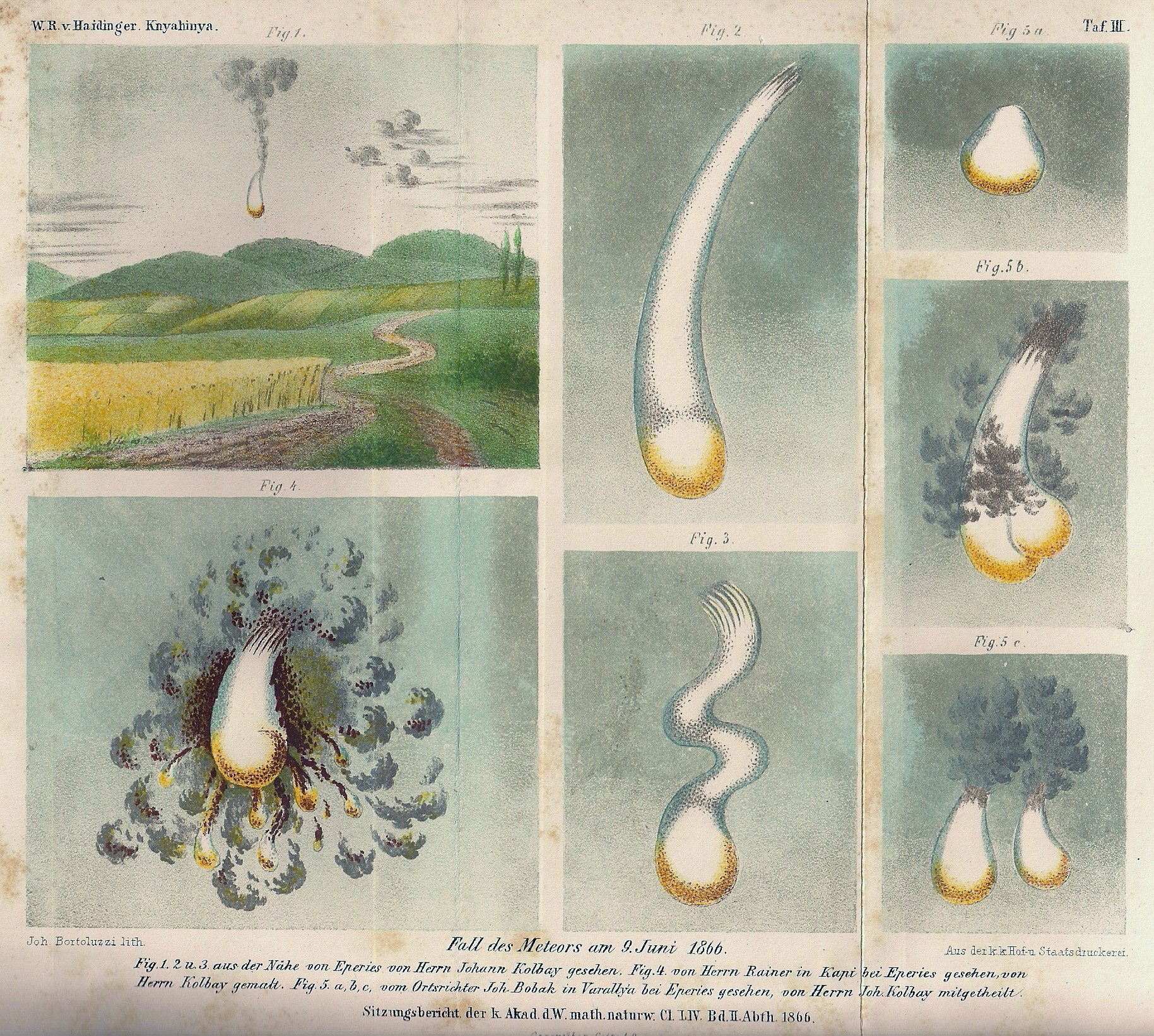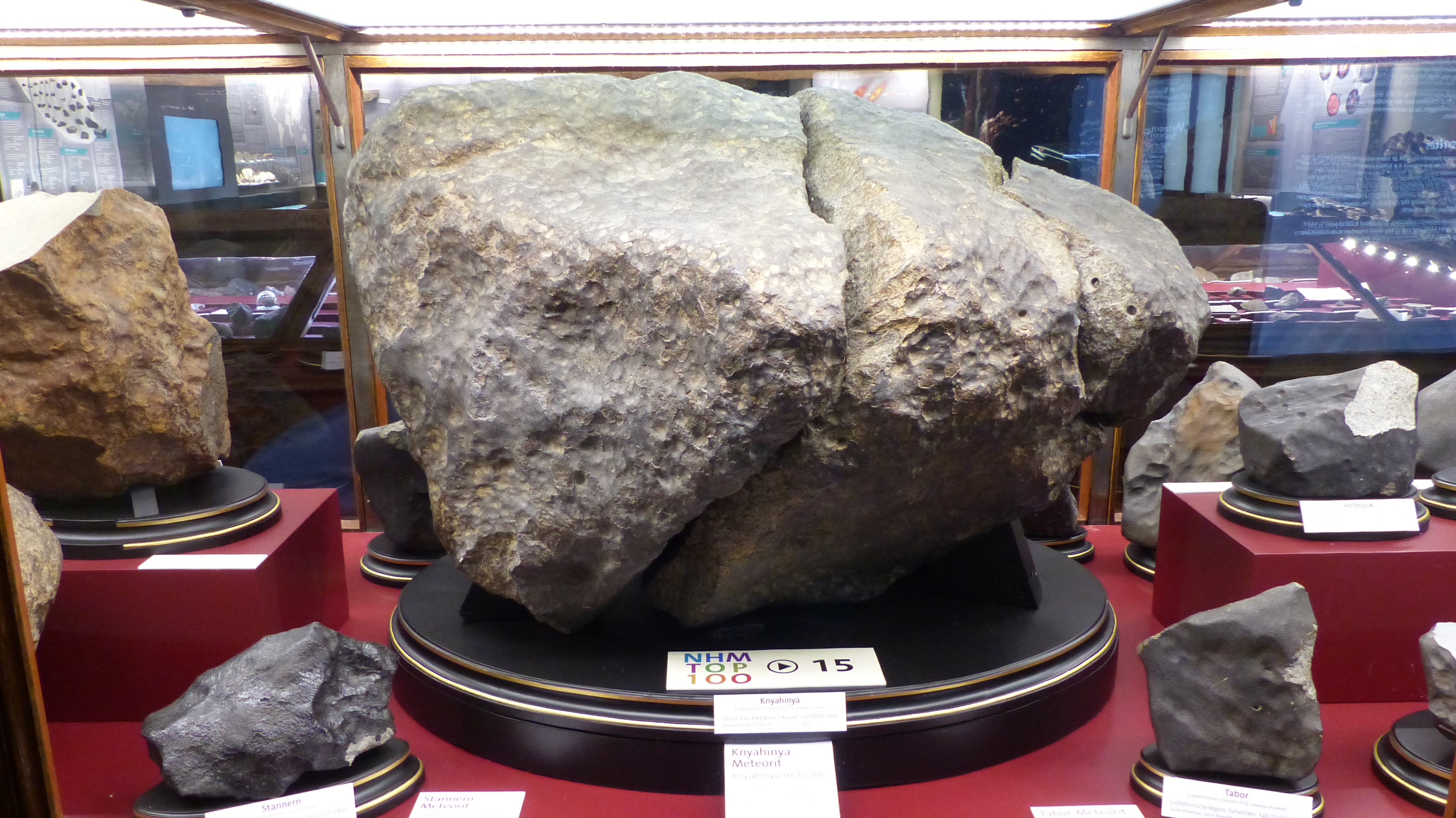Image Gallery



On the 9th of June, 1866 at 16:56 (17:00,16:05?) local time near the village Knyahynya, a very interesting event took place, the fall of the biggest meteorite in the Europe at that time. This have happened between the mountain ridges Stinska and Yavirnyk.
The meteorite appeared like fire-ball above the town Liptovsky Mikulash (Slovakia) and flew to east and at a distance more than 200 km broke to pieces near the village Knyahynya at a height 40 km. A real “rain of stones” has gone on the great territory. There were stones mainly on fields, road, streets in Knyahynya, Zboj, Stuzhytsya. But the greater part of stones fell in forest and was not found. The quantity of stones was very high. In the very first days over 60 stones were found by the local people, totally up to 1'200 stones. The biggest wreckage was found here on the slope of mountain Stinska in the locality Chorni Mlaky”.
This meteorite, as witnesses said, was found by local peasant Vasyl Kryvianyk. He mowed down grass on fields of the locality Chorni Mlaky every year. In a few days after the meteorite falling he went out to haying and saw a hole which he had never seen before on that place. He dug out that place more than 2 meters and found a great wreckage of meteorite which weight was 279 kg 766 gm. When falling down it broke into two pieces: 141.833 kg and 137.933 kg. From the last one there broke another one piece wich weight was 2.350 kg. The forestry officer Anton Pokornyi from Velykyi Berezny found out about this find. He bought this wreckage from Vasyl and then resold it to Imperial Museum In Wien, where this wreckage is exhibit these days.
On the 2nd of July, 1866, there was a special commission established by the administration of Uzhansky committee for investigation of this event. Its aim was to collect and explore the debris of this meteorite. Ten days later, on the 12th of July, 1866 a scientific expedition from Wien and Budapest arrived to the place of the falling meteorite. They have conducted a detail investigation on the territory of 2×0.75 miles and found another 72 pieces of debris, total weight of which was 100.5 pounds (approx. 46.7 kg). But the find of wreckage continued and in the day of 24th of September, 1866 there were found many pieces in total weight of which was 850.5 pounds (385.8 kg). According to the data of Wien Historical-Nature Museum, the total weight of all pieces of the meteorite is 500 kg. The stones of the Knyahynya meteorite are preserved in several historical and natual museums arround the world.
Ref: